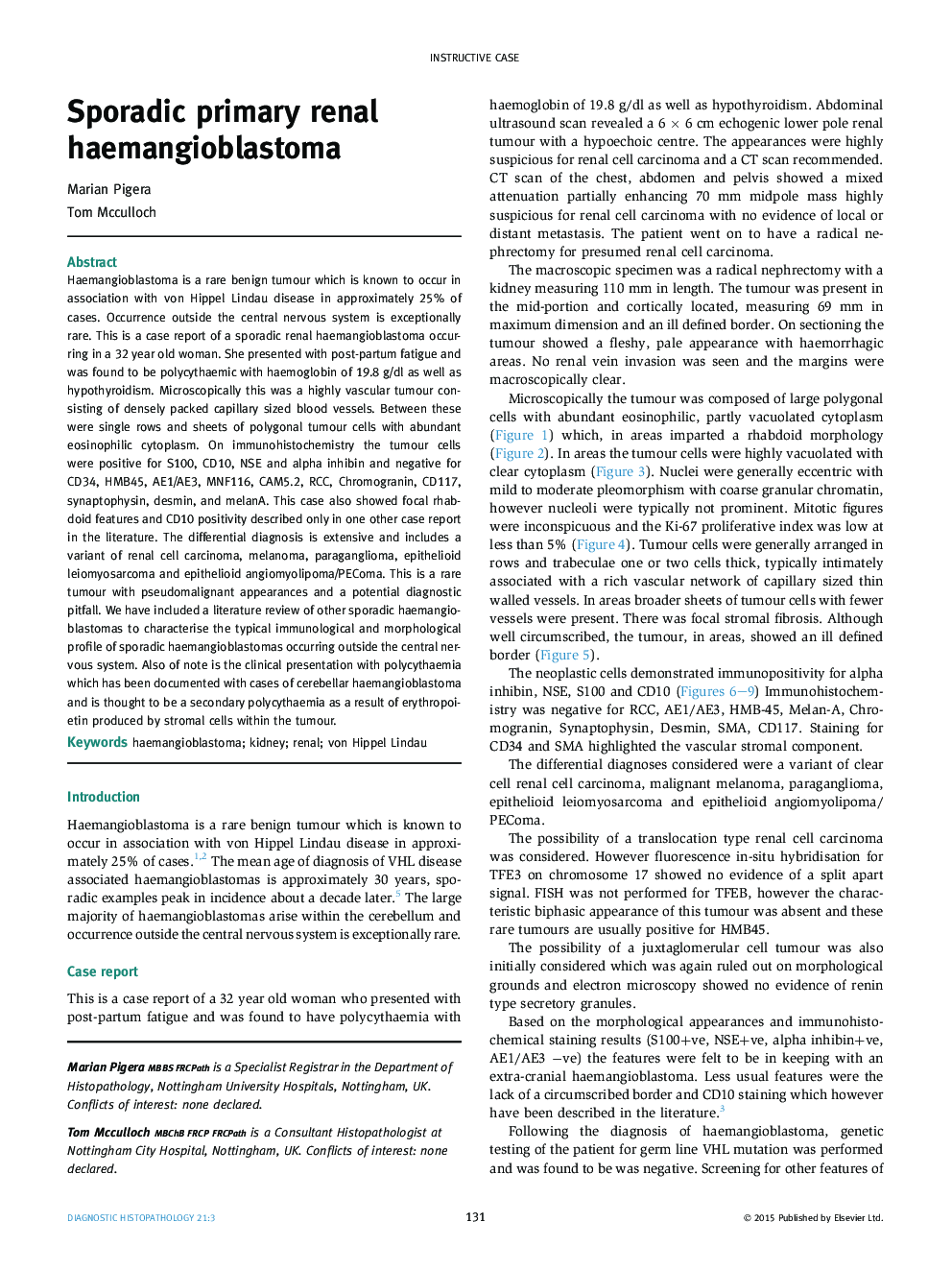| Article ID | Journal | Published Year | Pages | File Type |
|---|---|---|---|---|
| 4131038 | Diagnostic Histopathology | 2015 | 5 Pages |
Abstract
Haemangioblastoma is a rare benign tumour which is known to occur in association with von Hippel Lindau disease in approximately 25% of cases. Occurrence outside the central nervous system is exceptionally rare. This is a case report of a sporadic renal haemangioblastoma occurring in a 32 year old woman. She presented with post-partum fatigue and was found to be polycythaemic with haemoglobin of 19.8 g/dl as well as hypothyroidism. Microscopically this was a highly vascular tumour consisting of densely packed capillary sized blood vessels. Between these were single rows and sheets of polygonal tumour cells with abundant eosinophilic cytoplasm. On immunohistochemistry the tumour cells were positive for S100, CD10, NSE and alpha inhibin and negative for CD34, HMB45, AE1/AE3, MNF116, CAM5.2, RCC, Chromogranin, CD117, synaptophysin, desmin, and melanA. This case also showed focal rhabdoid features and CD10 positivity described only in one other case report in the literature. The differential diagnosis is extensive and includes a variant of renal cell carcinoma, melanoma, paraganglioma, epithelioid leiomyosarcoma and epithelioid angiomyolipoma/PEComa. This is a rare tumour with pseudomalignant appearances and a potential diagnostic pitfall. We have included a literature review of other sporadic haemangioblastomas to characterise the typical immunological and morphological profile of sporadic haemangioblastomas occurring outside the central nervous system. Also of note is the clinical presentation with polycythaemia which has been documented with cases of cerebellar haemangioblastoma and is thought to be a secondary polycythaemia as a result of erythropoietin produced by stromal cells within the tumour.
Related Topics
Health Sciences
Medicine and Dentistry
Pathology and Medical Technology
Authors
Marian Pigera, Tom Mcculloch,
